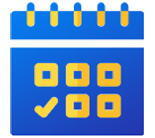- Study Destinations
- More


Australia's most valuable asset is its education system. Their emphasis on educational development is simply remarkable. Toward this end, the Australian Government invests millions of Australian dollars each year. This is done without compromising education quality. They use modern values in their education system. They simplify the syllabus, making it easier for students to grasp.
Without a doubt, the education system of Australia is the best in the world. More than half a million students in the world attend higher education institutions in Australia. Moreover, seven Australian universities are among the top 100 universities in the world. Approximately 22,000 programs are available to local and international students.
Structure Of Australian Education System
This is the general structure of the Australian education system:
- In a primary school, children start at Foundation (also called kindergarten/preparatory/preschool) and continue until at least Year 6 or 7.
- In the secondary school system, students are in grades 7 or 8 through grade 10 for four years.
- Two years of senior secondary school: 11 and 12.
- The tertiary educational system comprises higher education and vocational education and training (VET).
The Australian Qualification Framework (AQF)
The Australian Qualifications Framework (AQF) sets the Australian education system apart from many other countries. This policy was established in 1995 and covers both the school-leaving certificate and qualifications from the tertiary education sector.
The AQF has ten levels and incorporates both school and university education under one national framework. Students can easily switch between levels of study and institutions as long as they meet student visa requirements. This allows them to plan their careers more effectively. AQF qualifications make you more prepared for both your future studies and employment.
Universities And Higher Education
The diversity of study options and opportunities available at Australian universities appeals to international students. There are various higher education courses available in Australia that can lead to an advanced degree. Higher education leads to several degrees, including Bachelor's, Master's, and Doctoral degrees.
Educational Pathways
Your study plan can be streamlined when you follow an educational pathway. Taking a Foundation course may help you reach your goals more quickly. The Australian educational system offers many pathways to success for those not meeting entry requirements to enroll in the program they desire. For example, you may attend an Australian school, take English language courses, or study vocational education and training.
Vocational Education
If you are seeking to make a quick career switch or embark on tertiary education, you may benefit from vocational training. The VET sector in Australia is a partnership between Government and industry. The Government offers VET qualifications through TAFE institutions. The Australian Government (both federal and state) provides funding, formulates policies, and ensures that the sector is regulated and is of high quality.
English Courses
If you study English in Australia as a Pakistani student, you will learn an array of life skills that you will not be able to acquire in your home country. This is because Australia's English curriculum involves much more than reciting words. Learning is based on critical thinking, along with group and project work, project-based learning that applies to real-life situations.
Postgraduate Studies
You can continue your university education at a higher level. Australian universities offer multiple postgraduate study options. You can use them to advance your career or change the direction of your studies. Below are some postgraduate options at Australian universities.
- Graduate certificate
- Graduate diploma
- Master degree
- Doctoral degree
Australia's Academic Year Dates
Schools
- Total duration: 13 years (kindergarten through year 12).
- Semesters or terms are 4.
- Starting in late January or early February.
English
- A period of 5 weeks to one year.
- Weeks make up the year's semesters.
- Starts - all year round.
Foundation
- Duration - 1 year (maybe longer)
- Semester breaks will vary according to the course.
- Intake: February, but it can vary based on the course and the institution.
- Vocational education and training
- Duration is 1-4 years.
- Two semesters
- Intake - February
Undergraduate
- Duration - usually 3-4 years
- Semesters are two (sometimes trimesters)
- Intake in March (can vary)
Postgraduate
- Time frame: 1 to 2 years.
- Semesters: 2 (some institutions offer 3)
- Intake: March
Australia As A Career After Graduation
Getting a new working visa before your student visa expires is essential to stay in Australia after graduation. There are multiple visa options available to international students.
- f you have completed a Bachelor's, Master's, or Doctoral degree, you can apply for the Temporary Graduate Visa (subclass 485).
- Send an Expression of Interest through the Australian Government's Skill Select program, seeking permission to work in Australia as a professional worker.
- A state or territory government nominates skilled and business migrants.
Get in touch with us to learn more about studying in Australia. We're here to help!
Ready to get started? Book a FREE appointment to discuss your study options in Australia.

